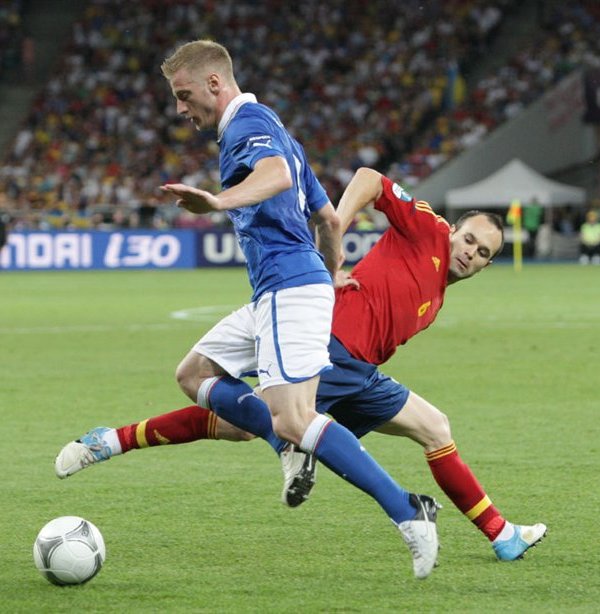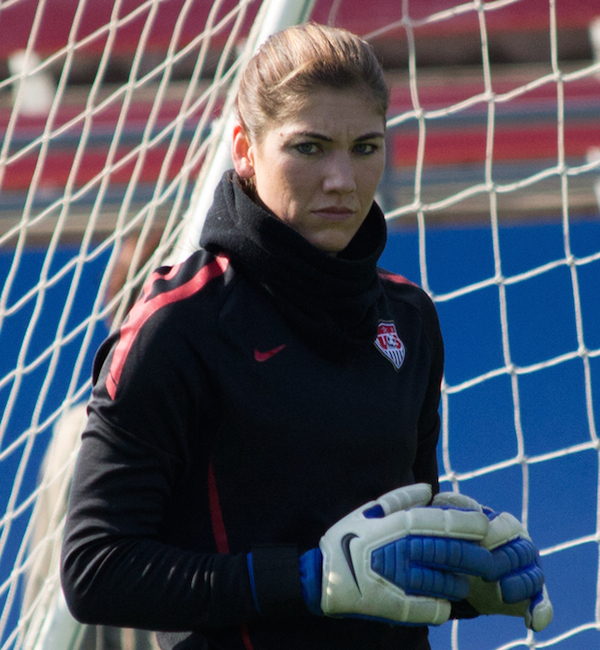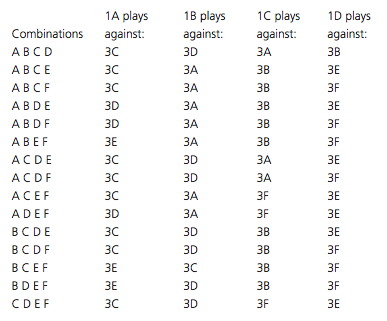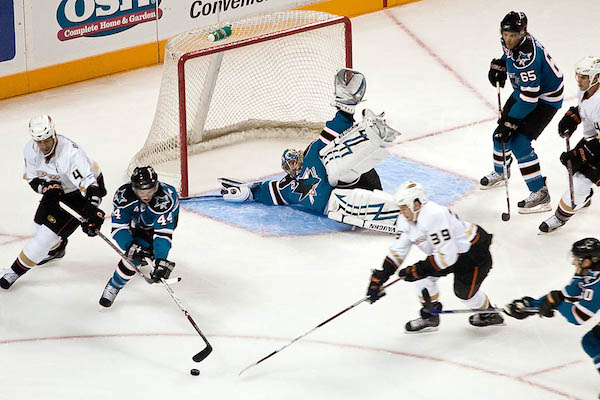Dear Sports Fan,
Over the past three years, I’ve become an ice hockey fan but there’s one thing that still really annoys me. Hockey fans and commentators often talk about “shots” as a meaningful statistic but it seems totally meaningless to me. Apparently a shot that hits the post doesn’t count as a shot — just the same as a shot that goes twenty feet wide. That distinction should mean something! What does the shot statistic means and why I should care about it?
Thanks,
Sonja
Dear Sonja,
Sports are full of statistics. From the outside looking in, it might seem like sports fans are just obsessed with statistics for no reason. That’s probably true for some sports fans but the purpose of a stat, the reason why it exists, is to represent some aspect of the game numerically so that it’s easier to know how well a team or player is doing. Stats are supposed to help the viewer understand what’s going on in a given game and to compare the performance of their favorite teams and players not only against their opponents but also against their own past performances. The sports world is in the midst of a thirty year statistical revolution during which many of the older statistics have been torn down and either replaced by new ones or simply discredited. Shots are one of ice hockey’s oldest statistic. Why don’t we examine what the shots statistic is, what it’s trying to tell us, and what some potential replacements could be.
The full name of the statistic which is commonly referred to as “shots” is “shots on goal.” In some ways, this helps explain what the statistic means and in other ways… well, in other ways, it probably serves only to further the confusion. “Shots” sounds like it should include any time a player winds up and shoots the puck, intending to score a goal, even if her shot is blocked or goes three feet wide. When you use the full name of the statistic, it becomes more understandable why shots that are blocked or miss the goal aren’t counted. That’s good — a stat’s name should reflect what it actually is. What you point out about hitting the posts or the crossbar is true though. Those shots are not counted in the shots on goal statistic even though they may feel like they should.
My totally unfounded guess about how this game about is that goalie statistics are a little bit older than skater statistics. Perhaps the shots statistic was created in response to an older goalie statistic. Saves — the number of times a goalie catches or deflects the puck away — makes sense. Want to know how active a goalie has been during a game? How many saves did he make? Shots seems like the reverse of saves plus the number of goals a team scores. Every time the goalie makes a save the opposing team registers a shot. Every time the goalie doesn’t make a save and a goal results, the other team registers a shot. Combining metrics like these would make the life of an early statistics keeper much easier. A shot that hit the post and didn’t go in is clearly not a save, so it didn’t get counted as a shot either.
The problem with the shots on goal statistic, which I think you are getting at by objecting to the way shots that hit the post are treated, is that it doesn’t do a very good job at telling us anything meaningful about the game. At first glance, it seems like it’s trying to show how well a team or player is doing on offense. Alas, it doesn’t distinguish between a puck that hit the crossbar and one that missed by six feet, even if those two acts are very different from a successful-offense perspective. It counts a harmless, non-threatening long-distance wrist shot but it doesn’t count a puck that nearly goes in before being blocked by a desperate defender. If a team wanted to inflate their shots statistic, they would just wildly throw the puck at the net every time they got near the offensive zone. That’s not a good offensive strategy for winning, so it seems like an offensive statistic shouldn’t encourage it.
Before we get to ideas for replacing this statistic, it’s worth mentioning that in real life, over a large sample size, which the 82 game regular season in the NHL is, shots is not a terrible statistic. Oh sure, in any given game it could be problematic for the reasons we just mentioned, but over time the better offensive players and teams do tend to generate more shots. This past year, the team with the most shots per game during the regular season was the Chicago Blackhawks, now playing in the Stanley Cup Finals, and the player with the most shots was Alexander Ovechkin, who also had by far the most goals. Shots don’t have to be a perfect statistic to be useful in part because no reasonable player or team actually modifies their behavior based on the shots statistic. It’s not perfect but I am still happier when the team I’m rooting for has more shots than the other team does.
One of the reasons players and teams don’t optimize for shots is because they probably don’t even use that statistic anymore. Although it’s still a mainstay of television production and newspaper columns, almost every team has its own group of statisticians who work for it. These folks create and keep much more meaningful proprietary statistics that they hope will give their team an edge over the competition. I have no idea what their statistics are but here are some other stats could replace or augment the shots statistic. In addition to shots on goal, you’ll sometimes see a “shots attempted” statistic. This counts any shot that misses or is blocked as well as ones that count as shots. That’s good because it’s basically not subjective and it’s process driven instead of outcome driven. A team that has the puck more and is playing better offensively will generate more shots, even if the majority of them miss or get blocked. Another stat that I like is “scoring chances.” This one is totally subjective. It counts any time a team looks like it legitimately might score, even if that moment doesn’t result in a shot. Virtually every time the puck hits the post, it would count as a scoring chance because if it had been an inch to the right or left, you’d have had a goal. Sometimes a scoring chance could happen without even an attempted shot. If a player is wide open in front of the net and whiffs on a pass to her and never makes contact with the puck, it’s still a glorious and missed scoring chance. The problem with scoring chances is that what you or I might think of as a legitimate chance, someone else who has more confidence in the goalie might consider a routine save and not count.
Statistics create a representational model of the sports they seek to quantify. Like drawing a stick figure, a statistic doesn’t need to be perfect, or even good, to be helpful. The shots on goal statistic isn’t a very good one, but when combined with others, it can give a general sense of how a game is going.
Thanks for reading,
Ezra Fischer









